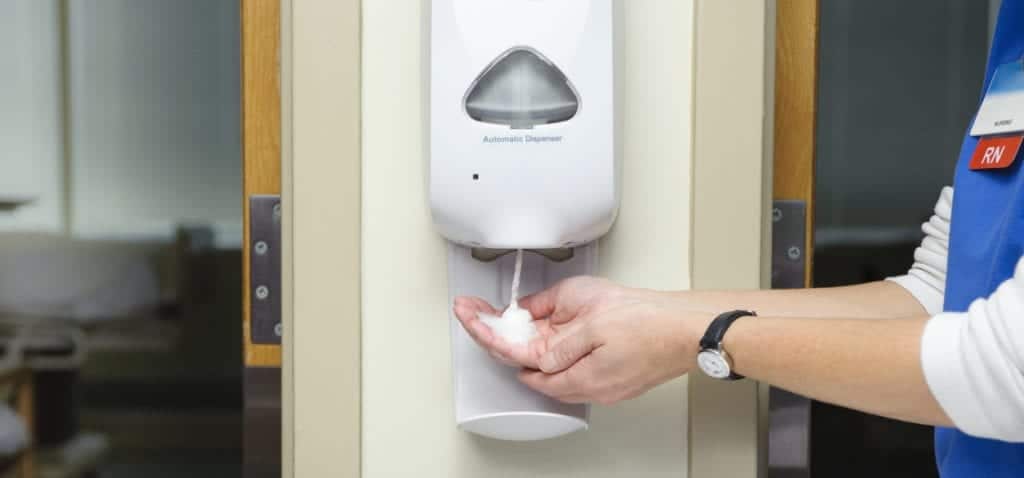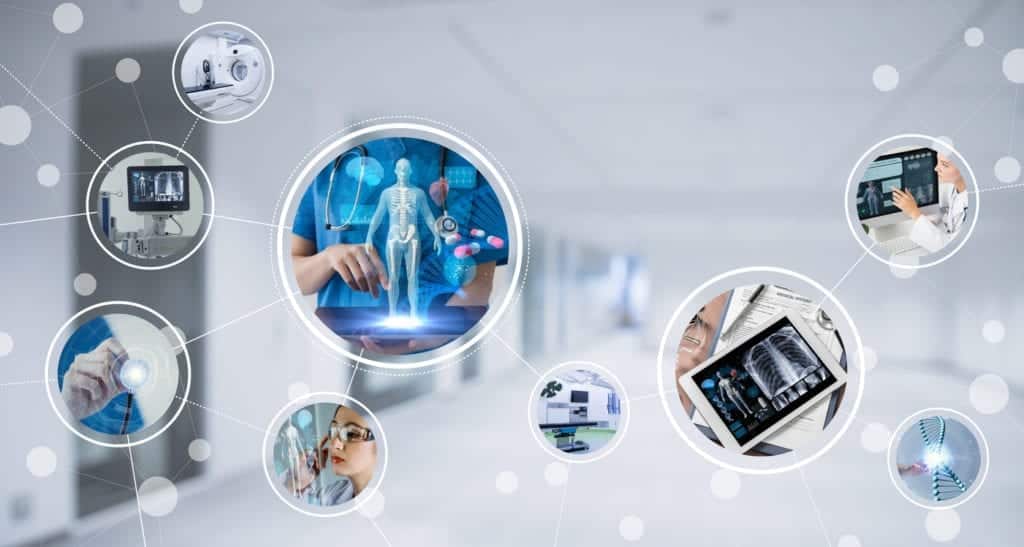Patient Outcomes Improve With IoT and Machine Learning
Healthcare-acquired infections impact patients' health and mortality at alarming rates. Read on to see how they can be largely preventable with an AI network.

More than 1.7 million people who enter U.S hospitals develop a healthcare-acquired infection (HAI), and 99,000 die of one, annually, according to the CDC.
The financial repercussions of HAIs are nearly as stunning as the health consequences. A recent article in Becker’s Hospital Review estimated that the total direct, indirect, and non-medical social costs of HAIs run $96 billion to $147 billion annually.
Artificial intelligence and machine learning may be the key to curbing the human and financial costs. How? By letting machines do what they’re good at — monitoring activity and correlating those activities to outcomes — and using the resulting data to proactively improve behaviors that can reduce infections.
The good news is that HAIs are mostly preventable. In 2018, the Joint Commission noted that, “hand hygiene is widely known to be the most important intervention for preventing healthcare-associated infections.”
Pathogens and Procedures Sicken and Kill
The Office of Disease Prevention and Health Promotion (health.gov) defines HAIs as “infections people get while receiving health care for another condition.” According to the CDC, a core deadly group of pathogens and infection routes are responsible for HAIs. Those include:
- Central-line associated bloodstream infections (CLABSI)
- Catheter-associated urinary-tract infections (CAUTI)
- Ventilator-associated events (VAE)
- Surgical-site infections (SSI)
- Clostridium difficile infections (C-Diff)
- Methicillin-resistant Staphylococcus aureus (MRSA)
- Pneumonia
Controlling HAIs: An Uphill Battle

The CDC tracks and issues reports on HAIs, the agency’s 2019 report on 2017 and 2018 rates of these infections indicates that, although some types are decreasing, others have not budged at all. The data shows that, between 2017 and 2018, there was:
- A 9 percent decrease in CLABSI (largest decrease in ICU – 11 percent)
- An 8 percent decrease in CAUTI (largest decrease in ICU – 10 percent)
- No significant change in VAE
- Of the 10 select procedures tracked in the report, no significant change in SSI in abdominal hysterectomies and colon surgeries
- No significant changes in hospital onset MRSA infections
- A 12 percent decrease in hospital onset C. difficile infections
Although the gains made in CLABSIs, CAUTI’s, and C-diff infections are encouraging, the numbers leave much to be desired. Currently, more people die as the result of an HAI than from breast cancer, AIDS and auto accidents combined.
IOT Monitors Handwashing
There have long been in-person efforts to monitor handwashing. Now, growing applications of the Internet of things (IoT) — defined as the networking capability that allows information to be sent to and received from objects and devices using the Internet — are enhanced by the current use of artificial intelligence (AI) in hospitals nationwide.
In 2018, the Joint Commission noted that, “hand hygiene is widely known to be the most important intervention for preventing healthcare-associated infections.”
Those efforts include using smart badges to promote staff handwashing in the hospital setting. But it’s not enough to simply monitor whether or not people are washing their hands — we want to tie to outcomes to actually change behavior. The robust data generated by electronic handwashing monitors can be analyzed to proactively improve handwashing behavior. And machine learning can analyze medical records and patient notes to track how handwashing reduces HAIs.
Text Classification Assists in Detecting HAIs
Current quality assurance programs involve having experts comb through records looking for evidence of HAIs. Not surprisingly, that process is tedious and error prone. Which is why researchers having some success in detecting HAIs in medical records through text classification is big news.
Using standard machine learning methods, and robust search, including preprocessing, lemmatization, stop word removal, terminology databases, automatic synonym detection, and TF-IDF weighting, they were able to positively identify medical records with HAI-language about 80 percent of the time. This allowed medical experts to examine a smaller set of records for HAI infection information.
They treated both structured and unstructured data as a single, unstructured text document. “This allowed us to apply standard text-classification methods, namely, applying TFs, such as features and standard machine-learning algorithms, to the problem.” This had several advantages:
- It removed formatting differences among records
- Allowed for including data treated as structured in some systems and unstructured in others in the study
- The approach was able to detect HAI indicators that were not known ahead of time.
This is so significant that the accreditation agency changed how it views behavior that lead to HAIs. As reported in Becker’s Hospital Review, “As of January 1, 2018, if a Joint Commission surveyor sees one clinician fail to clean his or her hands one time, the organization will be cited as a deficiency resulting in a Requirement for Improvement.”
In addition, article author Dr. Chris Hermann noted, “This means that one missed hand-hygiene opportunity will jeopardize a hospital’s accreditation and likely trigger a second survey.”
In 2019 “Antimicrobial Resistance & Infection Control” noted why the Joint Commission emphasizes handwashing. “Infection prevention and control (IPC) with hand hygiene as the most effective measure, is a practical and evidence-based approach with demonstrated impact on quality of care and patient safety across all levels of the health system.”
Despite the evidence, as recently as 2017, the CDC stated that studies show that health care providers clean their hands less than half the time that they should do so. Not only are patients becoming infected with pathogens from caretakers, but hospital staff themselves are becoming sick from patients and each other.
New approaches can be found in advances in health care technology that provide new options for establishing compliant handwashing protocols in U.S. hospitals.
Not Your ‘Hello, My Name Is…’ Kind of Badge

Smart badge systems generally revolve around four smart-device components that use hospital Internet servers to communicate with each other:
- The badge, worn by hospital staff
- Beacons, installed near patient zones
- Area smart soap and/or smart hand-sanitizer dispensers designed to sense pressure when the nozzle is pressed down
- A base station located near nurses’ stations that routes the badges’ data over the network, to an online dashboard
When the badge-wearer uses the dispenser, the information is sent to the smart badge. As staff members enter a patient zone, the beacons allow the badge to vibrate and remind the caregiver to wash up if he/she hasn’t done so and double-vibrates again once handwashing is completed.
In addition to providing a handwashing reminder, smart badges can gather data about:
- Individual health care workers’ handwashing habits
- Times of day that compliance surges or wanes
- Most- and least-used dispensers
- Length of time that hands are washed
- Other data for analysis
The data can inform future decisions, such as whether dispensers are in convenient areas and if more of them are needed, which providers require further education on handwashing, and can even help patients to know that their provider has performed appropriate hand hygiene, when they hear the reassuring double-buzz of the badge.
Nurses are not the only staff members who need reminders about handwashing protocols. According to a 2013 study in Lancet Infectious Diseases, nurses were more compliant with hand sanitation guidelines (71 percent) than doctors were (60 percent) when no hand sanitation reminders in place.
According to one study, use of such a system led to a 25 percent jump in compliance with the World Health Organization’s handwashing protocol. Another journal reported that use of such reminder systems increased worker handwashing after bathroom visits from 66 percent to 91 percent.
Advantages of Smart Handwashing Reminders
In addition to the obvious advantages for patient safety and hospital hygiene, there are several reasons for implementing smart badge systems in health care facilities. For example, smart badge hand hygiene systems can:
Remove the bias of supervisor observation. According to a 2013 study in BMJ, when hospital staff members’ knew they were being observed, their hand-hygiene practices were 90 percent compliant, but that number dropped significantly at times that monitors were not present. Smart badges provide unbiased and consistent reminders, and compliance data is collected 24/7.
Removes staff hierarchal biases. In certain settings, health care works may be hesitant to remind higher-ups, such as surgeons and supervisors, about the facility’s hand-hygiene protocols. Smart badges buzz no matter whose chest they rest on, regardless of title and status.
Deployment of a smart badge system can be flexible. Depending on the manufacturer, IoT badge systems can be configured on any number of devices. Reminders can be programmed to be sent to smart watches and cell phones, depending on a facility’s resources and needs.
Smart badges can be used for other applications. According to an article in WebMD, hospitalized patients also are lax about handwashing before and after meals, and after using the bathroom. This places hospital staff, visitors, and other patients at risk of acquiring HAIs. Smart badges could be issued to patients so that they, too, are reminded to practice rigorous hand hygiene. The same could be done for their visitors. Covering all of the bases is a good way to ensure compliance throughout a facility.
Smart Badge System Is Not Enough

A 2017 report from CMS indicates that smart-badge systems achieved significant reductions in HAIs in several U.S. hospitals. At Riverside Hospital in Illinois, for example, a smart badge pilot program resulted in a 39 percent increase in hand-hygiene compliance (from 57 percent to 79 percent). The MRSA infection rate dropped by 50 percent and the facility was only one of seven in the state that paid no readmissions penalties.
The report states that “a number of … hospitals have implemented electronic hand-hygiene monitoring interventions and achieved reductions in HAIs.” That includes White Plains Hospital (NY) and Children’s Hospital and Medical Center, (NE). Dozens of others are piloting smart badges as well.
Tom Dennis, co-founder and director at HITactics, said that they have found that the link between improved handwashing compliance and lower rates of HAIs is well established. Although manual reinforcement programs and direct observation of HHC opportunities are somewhat effective, they are expensive and often fall short of achieving 90 percent compliance long-term.
“We’ve found that electronic hand hygiene monitoring systems can provide 100 percent coverage and monitor handwashing compliance behavior across an entire facility,” Dennis said. They also found that one of the best ways to dramatically improve hand hygiene compliance is to provide care team members with real-time alerts and feedback at all required handwashing compliance events (for example, upon entry and exit of each patient room in a Cardiac ICU).
This type of data is essential to widespread adoption of smart badge networks in hospitals. HITactics is working with hospitals to pilot smart badge systems to gain evidence and on the utility of smart badges in reducing HAIs.
Patient Data Combined With Smart Badge Data
This is all good news — but we still don’t have the full picture. Compliance is one thing – outcomes are another — which is what insurers are looking for. This requires merging the smart badge data with patient record data, a much more challenging job that to date has been sporadic and manual.
A Smart Badge Outcome System would finally allow administrators to correlate handwashing compliance with specific offenders.
LEARN MORE
Contact us today to learn how Lucidworks can help your team create powerful search and discovery applications for your customers and employees.